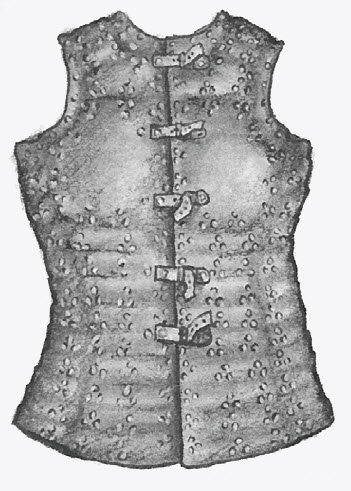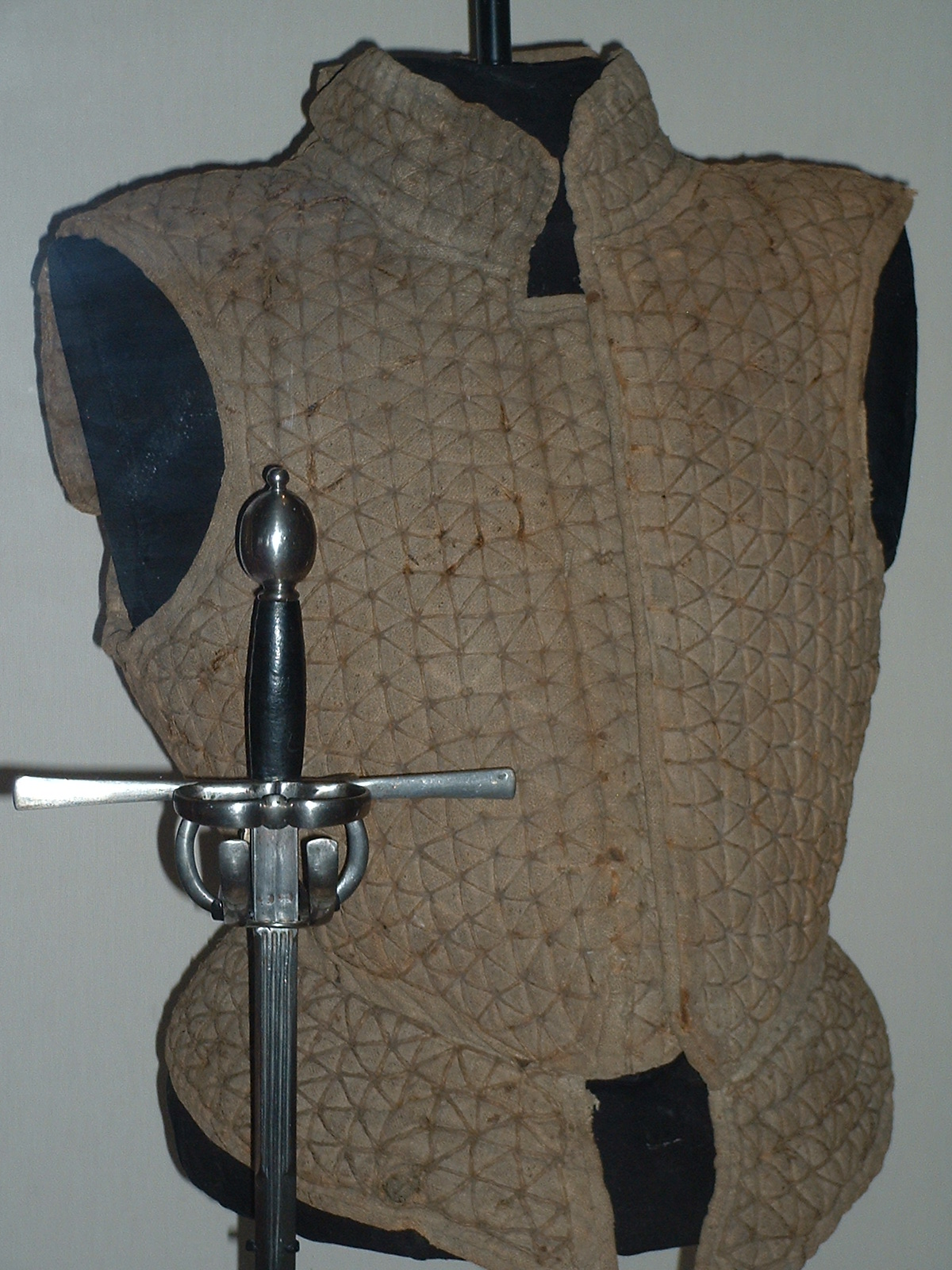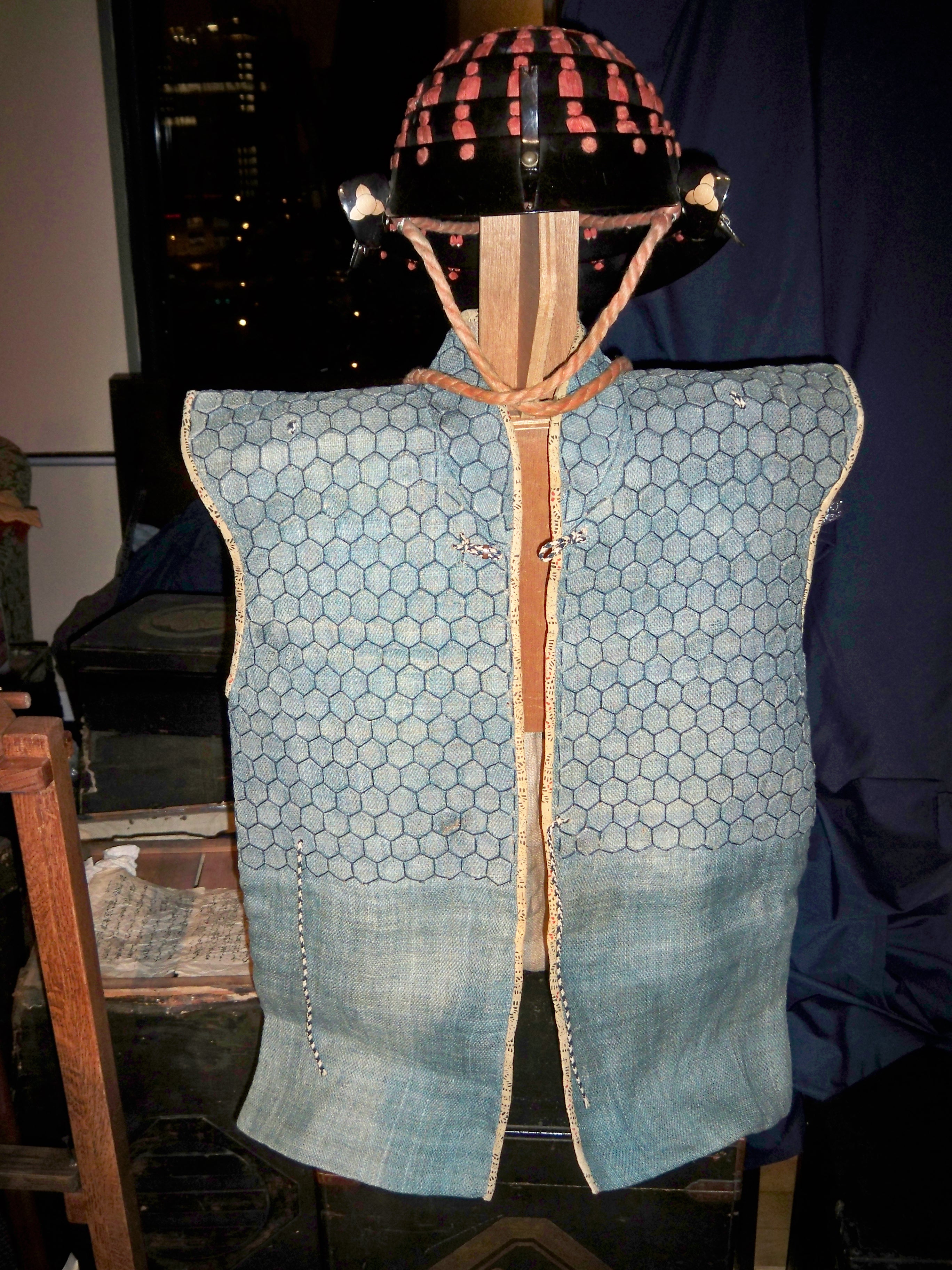Brigandine
A type of Armor
Rules
- See Armor for current rules regarding rating and construction.
In History
(From Wikipedia) Medieval brigandines were essentially a refinement of the earlier coat of plates, which developed in the late 12th century, typically of simpler construction made of larger plates.
Later Brigandines first appeared towards the end of the 14th century, but survived beyond this transitional period between mail and plate, and came into wide use in the 15th century, remaining in use well into the 16th. 15th century brigandines are generally front-opening garments with the nails arranged in triangular groups of three, while 16th century brigandines generally have smaller plates with the rivets arranged in rows.
Construction
(From Wikipedia) The form of the brigandine is essentially the same as the civilian doublet, though it is commonly sleeveless. However, depictions of brigandine armour with sleeves are known. The small armour plates were sometimes riveted between two layers of stout cloth, or just to an outer layer. Unlike armour for the torso made from large plates, the brigandine was flexible, with a degree of movement between each of the overlapping plates. Many brigandines appear to have had larger, somewhat 'L-shaped' plates over the central chest area.
The rivets, or nails, attaching the plates to the fabric were often decorated, being gilt, or of latten, and sometimes embossed with a design. The rivets were also often grouped to produce a repeating decorative pattern. In more expensive brigandines the outer layer of cloth was usually of velvet. The contrast between a richly dyed velvet cloth and gilded rivet heads must have been impressive and, unsurprisingly, such armour was popular with high status individuals.


